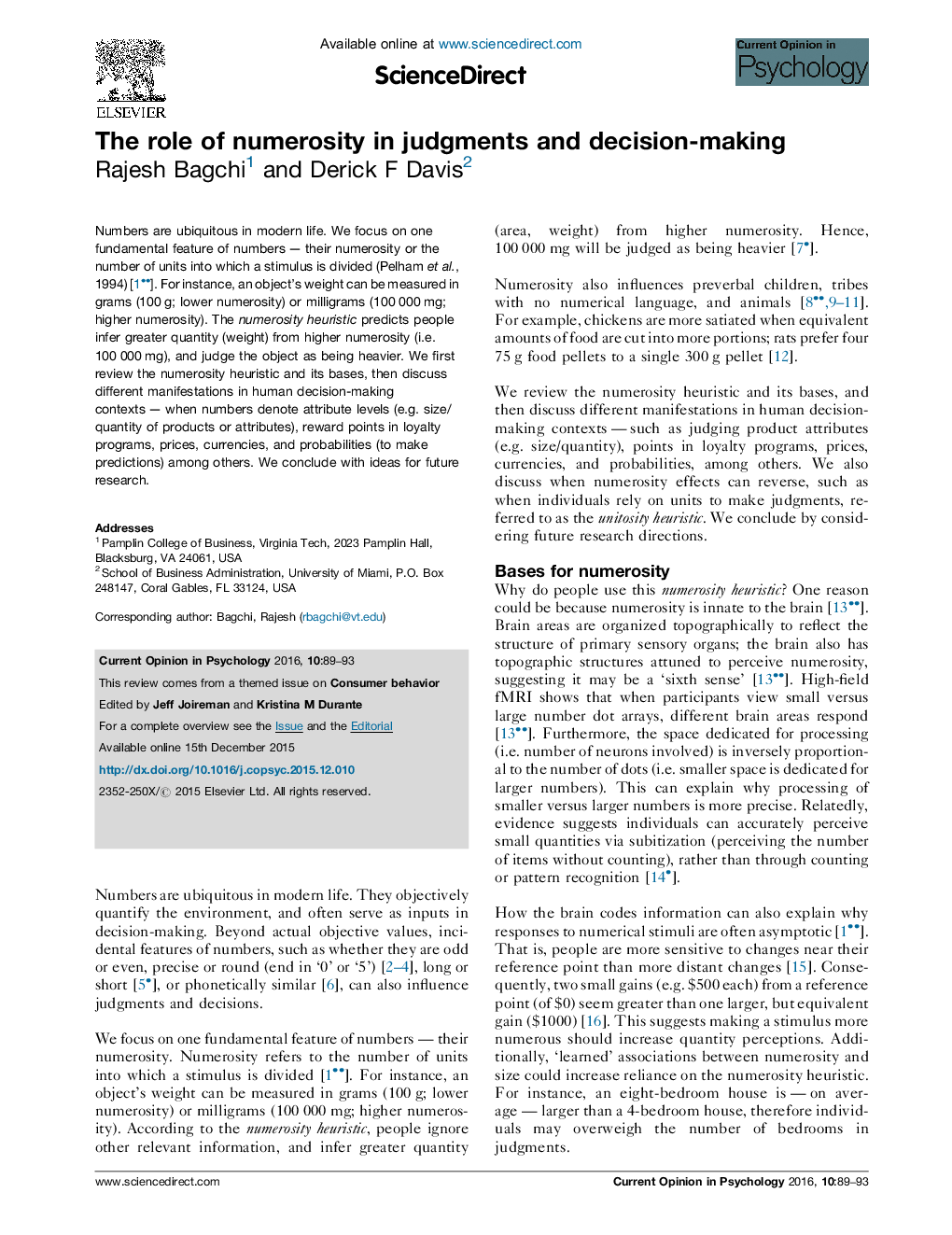| Article ID | Journal | Published Year | Pages | File Type |
|---|---|---|---|---|
| 879261 | Current Opinion in Psychology | 2016 | 5 Pages |
•Numerosity refers to the number of units into which a stimulus is divided.•People infer greater quantity from higher numerosity.•We review the bases of the numerosity heuristic.•We also discuss how it manifests in different decision-making contexts.
Numbers are ubiquitous in modern life. We focus on one fundamental feature of numbers — their numerosity or the number of units into which a stimulus is divided (Pelham et al., 1994) [ 1••]. For instance, an object's weight can be measured in grams (100 g; lower numerosity) or milligrams (100 000 mg; higher numerosity). The numerosity heuristic predicts people infer greater quantity (weight) from higher numerosity (i.e. 100 000 mg), and judge the object as being heavier. We first review the numerosity heuristic and its bases, then discuss different manifestations in human decision-making contexts — when numbers denote attribute levels (e.g. size/quantity of products or attributes), reward points in loyalty programs, prices, currencies, and probabilities (to make predictions) among others. We conclude with ideas for future research.
